Sandy RobinsCanine stomatitis is a painful condition characterized by inflamed lesions and ulcers in a dog’s mouth, making it difficult for affected dogs to eat and function normally. A veterinary dentist says new therapeutic treatments along with proper dental hygiene may effectively control and sometimes cure this debilitating disease.
There is no known exact cause for canine stomatitis, also known as canine chronic ulcerative stomatitis (CCUS). Jamie Anderson, DVM, MS, DAVDC, DACVIM, adjunct professor at the Department of Oral Medicine, School of Dental Medicine, University of Pennsylvania, has played a key role in research and treatment of this disease since 2013. She wants to dispel the belief that CCUS is the result of oral contact with plaque. Nor is CCUS directly related to periodontal disease as previously thought, she says.
“While research has shown that 40 percent of dogs with this condition also have severe periodontal disease, the remaining 60 percent do not,” she explains. “And we also now know that bacteria on the tooth surface that can result in a plaque buildup does not in fact cause the disease.”
Dogs suffering from this disease develop severe inflammation and oral ulcers on the tongue,  the mucosa, and the inner surfaces of the lips. Because it’s so painful, a dog may have difficulty eating and be reluctant to open the mouth. This can result in weight loss. Other typical signs include fetid breath, thick, ropey saliva, blood-tinged saliva, visible irritability, depression and lethargy, and pawing at the mouth.
the mucosa, and the inner surfaces of the lips. Because it’s so painful, a dog may have difficulty eating and be reluctant to open the mouth. This can result in weight loss. Other typical signs include fetid breath, thick, ropey saliva, blood-tinged saliva, visible irritability, depression and lethargy, and pawing at the mouth.
Susceptible Breeds
Commonly affected breeds include Maltese, Norwich Terriers, Labrador Retrievers, Greyhounds, Miniature Schnauzers, Chihuahuas, and Cavalier King Charles Spaniels. The condition is generally seen in dogs six years and older.
Dr. Anderson first became fascinated with this condition in 1991 during her residency at University of Pennsylvania and received her first grant to study CCUS in 2013 from the Foundation for Veterinary Dentistry. Her first study involved 20 dogs.
“Terrier breeds as well as Labradors were common in the study,” she recalls. “Most were neutered and older than nine years of age.” Under general anesthesia, a thorough oral evaluation was performed, and a Canine Ulcerative Stomatitis Disease Activity Index score was assigned. This score allowed for a before-and-after numeric description of response to therapy.
Anderson found that the number, size, and shape of the ulcers varied between dogs. Most of the ulcers were distributed symmetrically, appearing at the same site on both the left and right side. The ulcers were generally in contact with an opposing tooth surface and its plaque.
A full mouth set of dental radiographs was taken, and there were no radiographic findings unique to the condition. A biopsy from each dog was taken from an ulcer occurring in the cheek mucosa, and the samples were evaluated at University of California, Davis.
The pathologist found there was either erosion or ulceration of the epithelium; the sub-epithelium was where most of the cells causing inflammation resided. These cells were mostly lymphocytes (white blood cells) and plasma cells. With special staining in a subset of the cases, the team could determine that numerous inflammatory cells were present, including B cells and T cells, a T cell regulatory cell called FoxP3, and an interleukin called IL17. These cells play an important role in defending the mucosa from attack from outside the body and from self-attack, Anderson says.
Anderson’s second study set out to prove that the spectrum of pathologic changes and the types of immune cells present in CCUS were different from periodontal disease, with the goal of better understanding both diseases.
“We accepted 24 dogs with CCUS into this study, as well as dogs with severe periodontal disease, and healthy dogs as controls. Our research highlighted three histologic subtypes of ulcerative stomatitis, namely lichenoid, deep stomatitis, and granulomatous. Though these are not clinically apparent, we believe that these different subtypes represent a spectrum of the disease. And ultimately, the overall findings from this second study allowed us to conclude that CCUS is an immune-mediated inflammatory disease,” she says.
Hopeless Teeth
It has been common for veterinary dentists to extract healthy teeth to remove the plaque they believed to be causing the disease. Anderson believes the focus should be on extracting what are known as “hopeless” teeth — those that are no longer functional and that cause inflammation due to periodontal disease or endodontic disease.
“These dogs then need to be treated medically with systemic anti-inflammatory and immune-modulating drugs and topically with anti-plaque home care,” she says.
“While I do recommend the extraction of hopeless teeth from periodontal disease or as a result of fractures, further research has shown that plaque is not likely responsible for a mucosal ulcer,” she says. “We evaluated 100 samples, including healthy and periodontitis controls, to determine the spectrum of bacteria, the microbiome, involved in the CCUS lesion. The DNA isolated from the lesions was evaluated using next-generation sequencing methods. We found that the oral microbiome of the lesion in the cheek mucosa was unique and specific and varied significantly from the healthy dogs and those with periodontitis disease in the study.
“Consequently, our findings suggest that medical therapy, rather than extraction of healthy teeth, is most appropriate,” she says. “These medications control the disease, and in some cases, over a longer period of time on them, can cure the disease. If one regimen is not tolerated well, I will switch and try the other.”
Therapeutics
The first treatment is a combination of three drugs: 20 mg/kg of pentoxifylline, 5 mg/kg of doxycycline, and 200 to 250 mg of niacinamide taken orally twice daily.
“You can switch out the doxycycline for 10 mg/kg of metronidazole taken every 24 hours,” she says. “The side effects of such combos are typically inappetence or gastrointestinal upsets, likely due to the pentoxifylline.
“As the condition of the mouth improves, I will drop down the pentoxifylline dose to once every 24 hours, ultimately tapering it off, hence the importance of annual COHAT examinations,” she says.
The second drug combo consists of 5 mg/kg of cyclosporine (Atopica) and 10 mg/kg of metronidazole taken orally every 24 hours.
“This requires specific monitoring in dogs suffering from hepatic disease, along with further regular testing to ensure the medication is adequately suppressing the immune system,” she said.
John Lewis, VMD, FAVD, DAVDC, practices at Veterinary Dentistry Specialists in Chadds Ford, Pennsylvania. He has written about stomatitis in veterinary magazines and journals and says he has not utilized these protocols frequently enough yet to have a feel for their effectiveness.
“I believe more board-certified veterinary dentists are utilizing these or similar protocols,” he says.
“However, there are a number of diplomates that are having success treating canine stomatitis from a surgical standpoint (extraction of teeth that align with ulcerated areas) rather than with medical therapies, similar to the currently accepted approach to feline stomatitis. Canine stomatitis, thankfully, is infrequent compared to feline stomatitis.”
This article was reviewed/edited by board-certified veterinary behaviorist Dr. Kenneth Martin and/or veterinary technician specialist in behavior Debbie Martin, LVT.
Inset photo courtesy Jan Bellows, DVM, DAVDC.
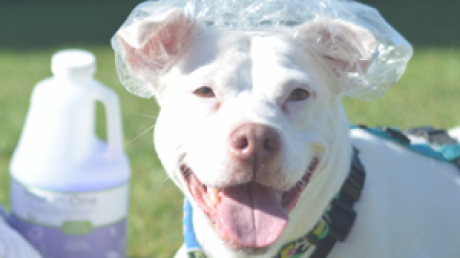
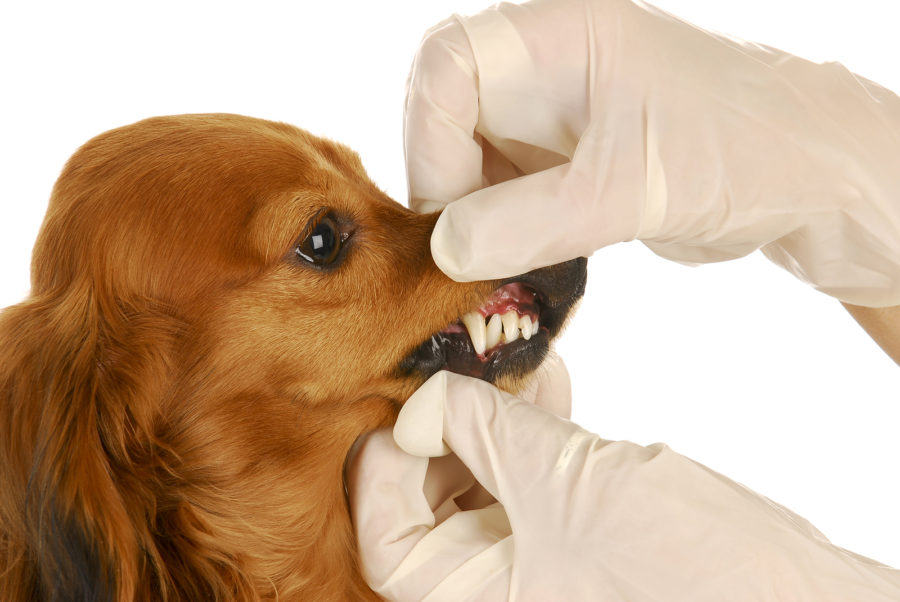
 the mucosa, and the inner surfaces of the lips. Because it’s so painful, a dog may have difficulty eating and be reluctant to open the mouth. This can result in weight loss. Other typical signs include fetid breath, thick, ropey saliva, blood-tinged saliva, visible irritability, depression and lethargy, and pawing at the mouth.
the mucosa, and the inner surfaces of the lips. Because it’s so painful, a dog may have difficulty eating and be reluctant to open the mouth. This can result in weight loss. Other typical signs include fetid breath, thick, ropey saliva, blood-tinged saliva, visible irritability, depression and lethargy, and pawing at the mouth.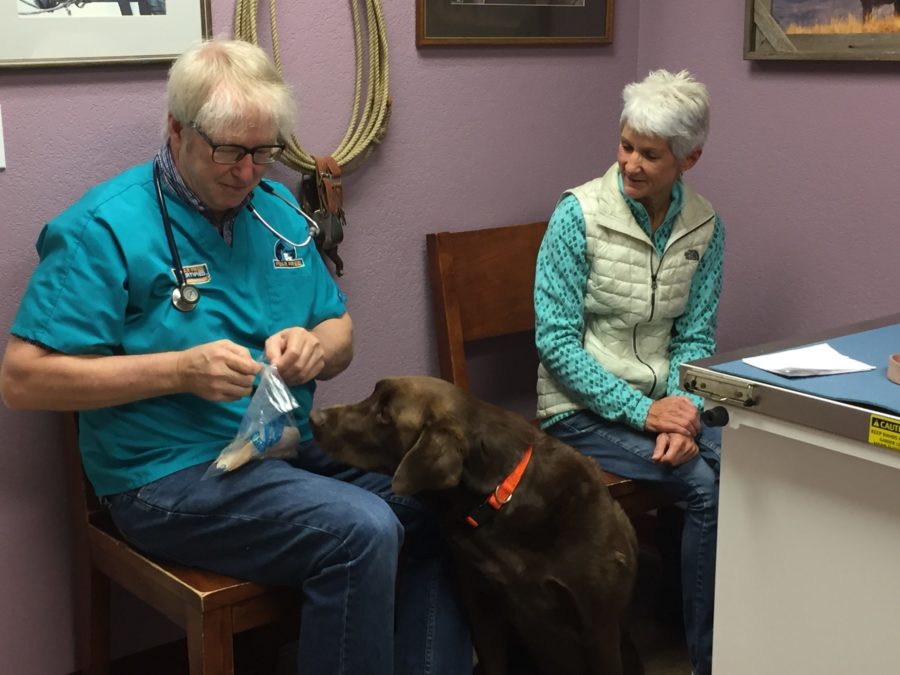

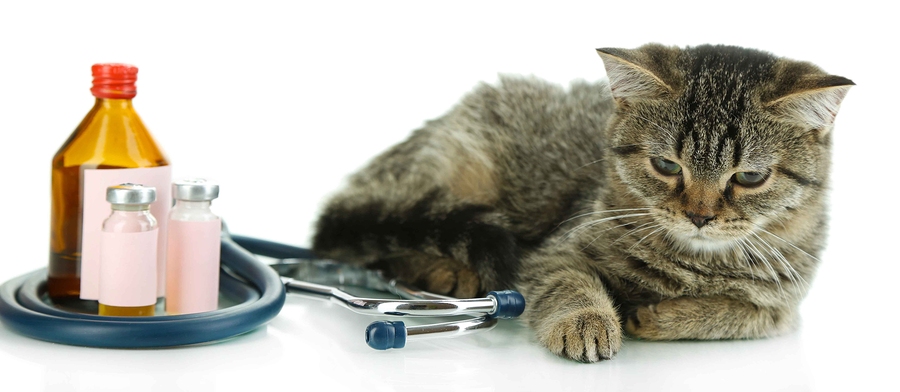


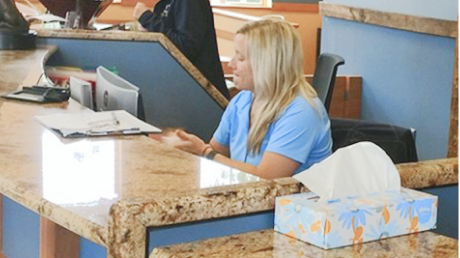
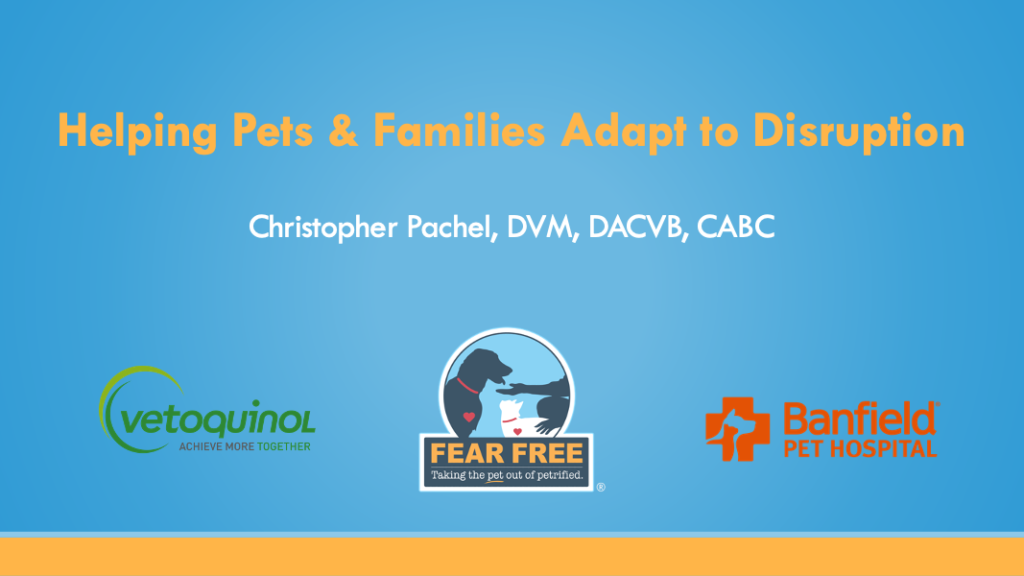
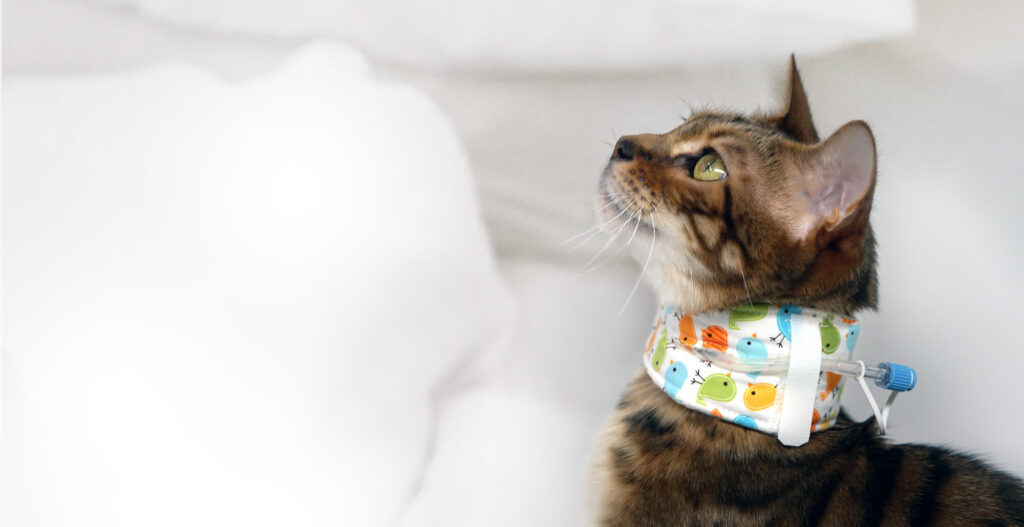
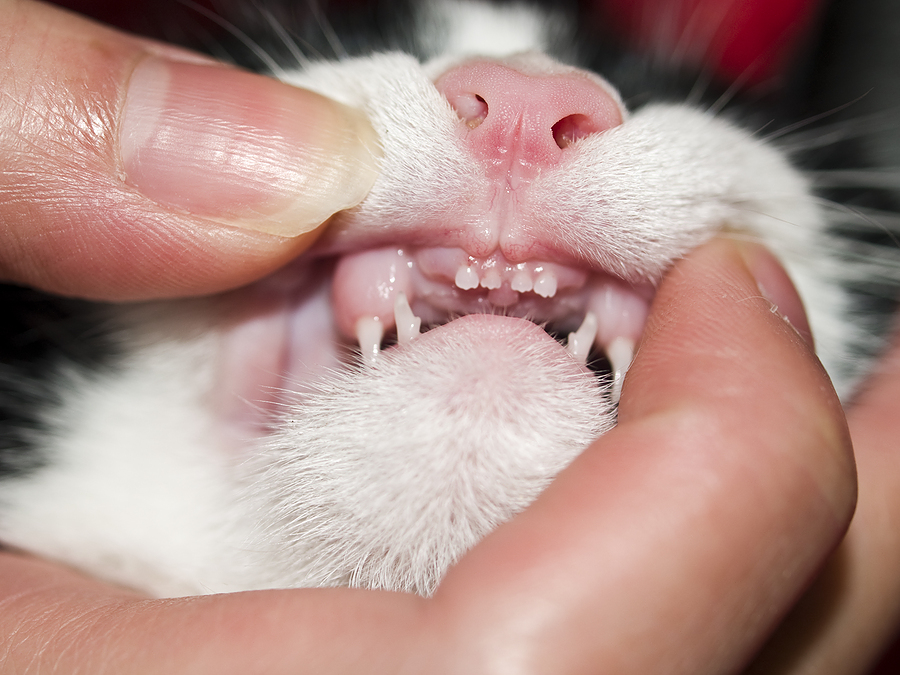

 Here’s a good rule of thumb when choosing a chew toy: if you can’t easily bend it with your hands or if you wouldn’t want to be hit in the knee with it, don’t give it to a pet. Wild dogs and wolves often have multiple fractures in their mouths due to chewing on bones.
Here’s a good rule of thumb when choosing a chew toy: if you can’t easily bend it with your hands or if you wouldn’t want to be hit in the knee with it, don’t give it to a pet. Wild dogs and wolves often have multiple fractures in their mouths due to chewing on bones.